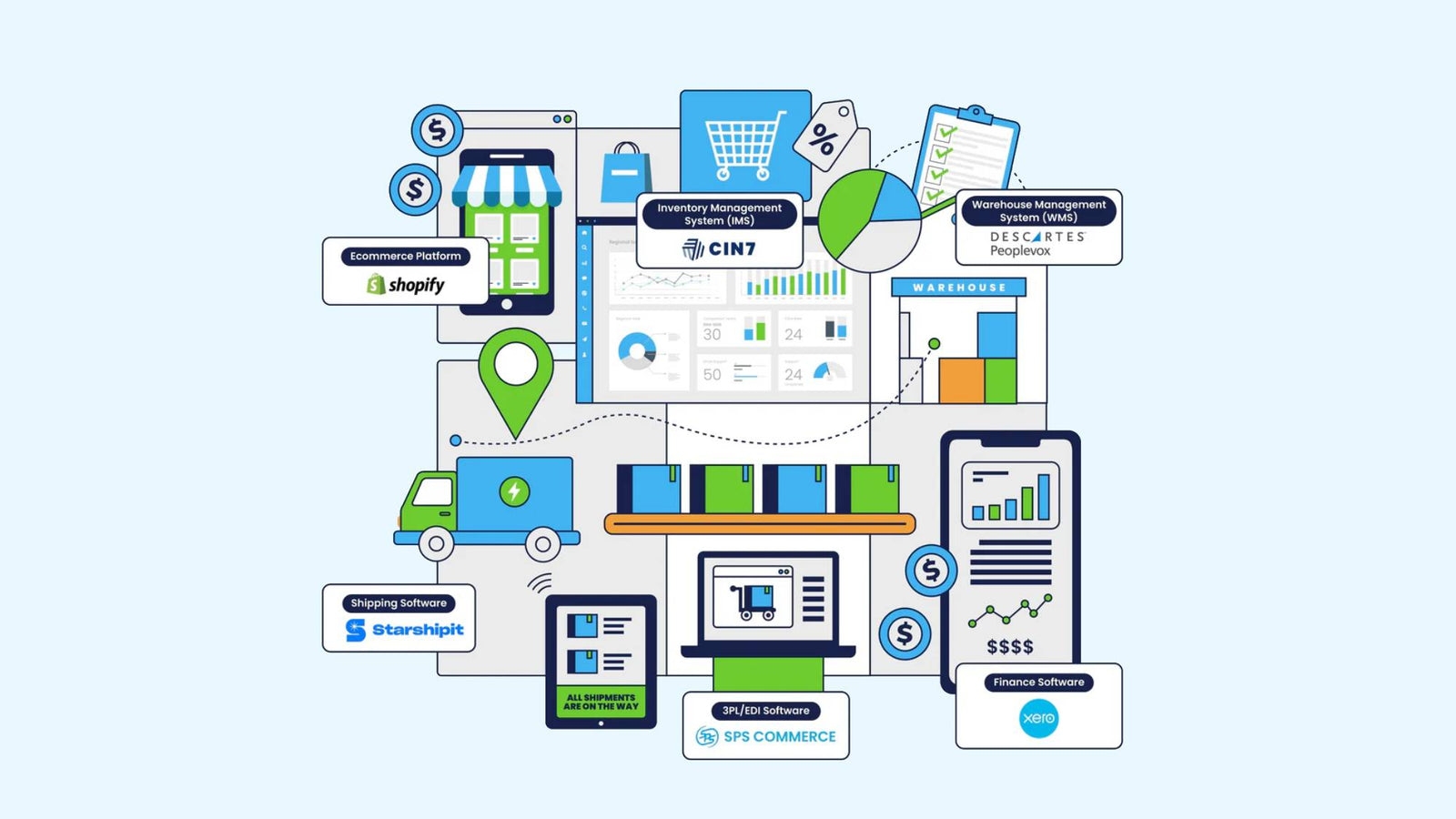Your Cart is Empty
Menu

How to Implement New Systems Without Disrupting Operations in Inventory Management
September 04, 2024

Implementing new systems in an inventory management business can be a daunting task, especially for small to medium-sized enterprises. The goal is to integrate these systems smoothly without causing disruptions to daily operations. To help you navigate this process, we’ve put together a guide highlighting common pitfalls to avoid and best practices to follow.
Things Not to Do
Think of these "don'ts" as the business equivalent of trying to build a house without a solid foundation or a blueprint. You wouldn’t want your house to collapse, just like you wouldn’t want your system implementation to fail.
- Don't Go Live at the Wrong Time: Avoid launching a new system on a Friday or during your peak business period. Choose a time when disruptions will have the least impact, ensuring your team is available to address any issues that arise.
- Don't Blindside Your Team: Sudden announcements can cause panic and confusion. Inform your team well in advance about the new system to ensure they have time to prepare and adapt.
- Don't Skimp on Communication: Clear communication is key. Failing to keep your team informed throughout the process is like a foreman not sharing the construction plans with workers. Regular updates and clear instructions are crucial to avoid misunderstandings and mistakes.
- Don't Overlook the Small Details: Minor elements like user permissions, data fields, and integration points can cause major issues if overlooked. Pay attention to these details to avoid future headaches.
- Don't Forget to Backup Data: Always have a backup of your current data before implementing a new system. This ensures you have a fallback option in case anything goes wrong during the transition.
- Don't Assume Everyone Understands: Assuming everyone knows their role without clarification can lead to chaos. Clearly define and communicate responsibilities to ensure smooth operations.
- Don't Underestimate the Effort: Transitioning to a new system is a significant undertaking. Be realistic about the time and resources required to ensure a successful implementation.
Things to Consider
Now, let’s talk about what you should do. Think of these "do's" as the business equivalent of laying a strong foundation and following a detailed blueprint. They help ensure a safe, smooth transition.
- Involve Your Team Early: Just like you wouldn’t start building a house without informing the construction crew, you shouldn’t implement a new system without involving your team from the start. Their input and buy-in are crucial for a smooth transition. Hold kickoff meetings, gather input, and keep communication channels open. This ensures everyone is on the same page and can contribute valuable insights.
- Run Parallel Systems: Running the new system alongside the old one is like having a rental home while your new house is being built. It ensures you have a place to stay while you work out any kinks in the new build, catching issues before they become major problems.
- Clear Ownership and Responsibilities: Clear roles and responsibilities are like having a construction foreman and crew with defined tasks. It ensures accountability and efficient progress. Assign specific roles to team members, define their responsibilities, and set realistic expectations. Regularly review progress and adjust as needed.
- User Acceptance Testing (UAT): UAT is akin to inspecting the house at various stages of construction to ensure it meets all requirements. It helps catch issues before they become costly to fix. Conduct thorough testing with end-users to ensure the system meets business needs. Address any issues identified during testing before going live.
- Pre-Implementation Modeling: Pre-implementation modeling is like creating a detailed architectural plan before construction begins. It helps visualize the final outcome and identify potential issues. Use a proof of concept or demo database to explore the new system. This allows your team to get familiar with it and understand how it will work in practice.
- Data Cleanup and Preparation: Proper data cleanup is like ensuring your building materials are high quality and free of defects. It prevents future problems and ensures a solid foundation. Review and clean up your data before migration. Remove duplicates, correct errors, and ensure consistency to avoid carrying old issues into the new system.
- Plan for Go-Live Timing: Timing your go-live is like choosing the best season to start construction. It helps minimize disruptions and ensures a smoother process. Choose a go-live date that avoids peak business periods or other major projects. Consider factors like seasonal peaks, fiscal periods, and staff availability.
- Post-Go-Live Training: Post-go-live training is like moving into a new house and gradually learning how everything works, from the appliances to the security system. Just as a new build comes with instructions or would have been discussed with the project manager, ongoing training helps address any issues and ensures everything runs smoothly. Continue training sessions after going live to address any questions or issues. Provide resources and support to help your team adapt to the new system.
- Fallback Plan: Having a fallback plan is like having an emergency kit on hand during construction. It ensures you’re prepared for any unexpected issues. Be prepared to delay the go-live if necessary. Have a contingency plan in place to address any major issues that arise during the transition.
- Working with a Partner: Collaborating with a partner like SMB Consultants who has expert knowledge in inventory management system implementation is like hiring an experienced contractor for your house build. They bring specialized skills and insights that ensure the project is completed efficiently and effectively. We are experts in this space and can guide you through the process, navigating challenges and optimize the implementation for your business needs.
By avoiding common mistakes and following these best practices, you can implement new systems in your inventory management business with minimal disruption. Remember, preparation and communication are the keys to success, just like building a house requires a solid foundation and a detailed blueprint.
Also in SMB Blog

From Chaos to Clockwork: Building a Fulfillment Stack That Just Works
October 06, 2025
Disconnected systems drain time, money, and energy from your business. Learn how connecting your core platforms - Shopify, Cin7, PeopleVox, Starshipit, SPS Commerce, and Xero - creates a smooth, automated flow from order to accounting. Discover how integration transforms chaos into clarity, freeing your team to focus on growth.

Holiday Forecasting Strategies: How to Prepare for Black Friday & Christmas
September 11, 2025
Black Friday and Christmas bring both opportunity and risk for product-selling businesses. With the right forecasting tools and accurate data, you can avoid stockouts, protect cash flow, and keep customers happy during the busiest season of the year.

The Inventory Iceberg: What's Hiding Below Your Balance Sheet
June 16, 2025
Inaccurate inventory is like an iceberg—what you see above the waterline is just a fraction of the problem. The hidden costs of inventory inaccuracies can silently affect every area of your business, from financial losses to damaged customer relationships. Discover how partnering with SMB Consultants can help you navigate these treacherous waters and transform inventory management from a constant worry into a strategic advantage.